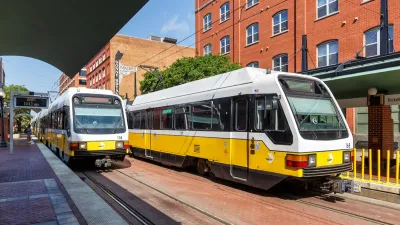The largest grid operator in the U.S. is asking for a new approvals process and two-year delay on current applications to ease the logjam of primarily solar projects in its queue.

"The nation’s largest electric grid operator, PJM Interconnection, is so clogged with requests from energy developers seeking connections to its regional transmission network in the eastern United States that it is proposing a two-year pause on reviewing more than 1,200 energy projects, most of them solar power." An article by James Bruggers explains the logjam, which "threatens to put some solar developers in a financial bind and is raising questions about the feasibility of the Biden administration’s goal of having a carbon-free electricity grid in just 13 years."
With demand for solar projects spiking and their economic competitiveness growing as more states implement renewable energy incentives, PJM says it can't keep pace with the careful scrutiny needed to approve each project, Bruggers writes. To ease the backlog of pending projects, PJM proposes "a new approval process that puts projects that are the most ready for construction at the front of the line, and discourages those that might be more speculative or that have not secured all their financing" as well as the two-year delay.
Some compare the process to metered traffic lights at freeway on-ramps. "It feels like you should just get there as fast as you can. You shouldn’t have to pause in order to get on the highway. But actually it’s better for everyone if you do, even if it might be slightly worse for you, the individual traveler," explains Justin Vickers, staff attorney for the Environmental Law & Policy Center.
Trade group experts warn that more long-term systemic solutions are needed to "move the country toward better transmission and interconnection policies" and prevent future bottlenecks.
FULL STORY: Overwhelmed by Solar Projects, the Nation’s Largest Grid Operator Seeks a Two-Year Pause on Approvals

Study: Maui’s Plan to Convert Vacation Rentals to Long-Term Housing Could Cause Nearly $1 Billion Economic Loss
The plan would reduce visitor accommodation by 25,% resulting in 1,900 jobs lost.

Alabama: Trump Terminates Settlements for Black Communities Harmed By Raw Sewage
Trump deemed the landmark civil rights agreement “illegal DEI and environmental justice policy.”

North Texas Transit Leaders Tout Benefits of TOD for Growing Region
At a summit focused on transit-oriented development, policymakers discussed how North Texas’ expanded light rail system can serve as a tool for economic growth.

Paris Bike Boom Leads to Steep Drop in Air Pollution
The French city’s air quality has improved dramatically in the past 20 years, coinciding with a growth in cycling.

Why Housing Costs More to Build in California Than in Texas
Hard costs like labor and materials combined with ‘soft’ costs such as permitting make building in the San Francisco Bay Area almost three times as costly as in Texas cities.

San Diego County Sees a Rise in Urban Coyotes
San Diego County experiences a rise in urban coyotes, as sightings become prevalent throughout its urban neighbourhoods and surrounding areas.
Urban Design for Planners 1: Software Tools
This six-course series explores essential urban design concepts using open source software and equips planners with the tools they need to participate fully in the urban design process.
Planning for Universal Design
Learn the tools for implementing Universal Design in planning regulations.
Smith Gee Studio
Alamo Area Metropolitan Planning Organization
City of Santa Clarita
Institute for Housing and Urban Development Studies (IHS)
City of Grandview
Harvard GSD Executive Education
Toledo-Lucas County Plan Commissions
Salt Lake City
NYU Wagner Graduate School of Public Service





























